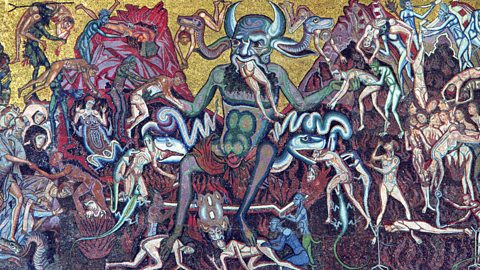
From
Satyr
Plays
to
Modern
Memes:
The
Evolving
Face
of
Satire
Before
the
Romans
formalized
satire
in
literary
terms,
the
seeds
of
ridicule
and
social
commentary
were
already
sprouting
in
ancient
Greece.
Specifically,
the
theatrical
tradition
known
as
satyr
plays
offered
a
comedic
counterbalance
to
the
weighty
tragedies
of
playwrights
like
Aeschylus
or
Sophocles.
These
bawdy,
irreverent
performances
featured
choruses
of
half-goat,
half-man
creatures—the
satyrs—who
mocked
gods,
heroes,
and
mortal
follies
alike.
Though
not
exactly
“satire”
in
the
Roman
sense,
satyr
plays
brought
a
spirit
of
irreverence.
They
used
humor,
slapstick,
and
vulgarity
to
critique
the
themes
that
tragedies
posed
so
seriously.
Over
time,
comedic
drama
itself
evolved.
Aristophanes
famously
wrote
plays
that
lampooned
Athenian
politics,
societal
norms,
and
revered
figures.
This
comedic
tradition
would
eventually
inspire
the
Roman
stage,
where
elements
of
jest,
parody,
and
biting
commentary
were
further
refined.
Fast-forward
many
centuries,
and
satire
continues
to
morph.
In
the
Middle
Ages,
comedic
elements
often
surfaced
in
performances
by
traveling
minstrels
or
court
jesters.
But
it
wasn’t
until
the
printing
press
revolution
that
satire
found
broader
audiences
through
pamphlets
and
broadsheets.
With
each
technological
or
cultural
shift,
satire
adapts.
Today,
it
flourishes
on
social
media
platforms
as
memes:
brief
visual
or
textual
jokes
that
spread
virally,
mock
norms,
and
question
authority,
all
within
a
matter
of
seconds.
This
trajectory—from
satyr
plays
to
memes—highlights
satire’s
core
function:
to
reveal
truths
we
might
otherwise
ignore.
Ancient
performances
poked
fun
at
mythic
heroes,
pointing
out
their
flaws.
Modern
memes
target
political
figures,
celebrities,
or
even
entire
institutions,
often
using
sardonic
wit
or
minimalist
captions
to
call
out
hypocrisy
or
foolishness.
The
mediums
differ
drastically,
but
the
core
remains:
challenge
power
structures,
mock
arrogance,
and
unveil
hidden
contradictions.
One
could
argue
that
memes,
much
like
satyr
plays,
distill
complex
issues
into
digestible,
humorous
bites.
They
resonate
because
they’re
easy
to
share,
easy
to
understand,
and
often
loaded
with
cultural
references
that
forge
a
sense
of
community
among
those
“in
the
know.”
At
the
same
time,
critics
worry
that
such
condensed
forms
can
cheapen
discourse,
reducing
nuanced
debates
to
snarky
one-liners.
Yet,
that
tension
has
always
hovered
around
satire.
Even
Aristophanes
faced
backlash
for
turning
serious
matters
into
comedic
farce.
Ultimately,
satire’s
flexibility
in
form
proves
its
enduring
power.
Whether
on
an
ancient
Greek
stage
or
on
a
smartphone
screen,
it
persists
because
it
offers
relief
from
tension.
Laughter
becomes
a
coping
mechanism
when
we
face
grim
realities
or
entrenched
hierarchies.
Satire,
then,
is
both
an
escape
and
an
engagement.
It’s
the
carnival
mirror
that
distorts
appearances,
revealing
deeper
truths.
The
journey
from
satyr
plays
to
memes
illustrates
how
each
era
tailors
satire
to
its
cultural
tools,
yet
the
essence
remains
unaltered.
As
society
evolves,
so
does
the
style,
but
the
purpose—using
humor
to
challenge
and
reflect
on
societal
norms—stands
firm.
In
that
sense,
the
satyrs
of
old
and
the
meme
creators
of
today
share
a
legacy,
each
mocking
their
world
with
a
wink
and
a
grin.
Go to Source
Author: Ingrid Gustafsson


